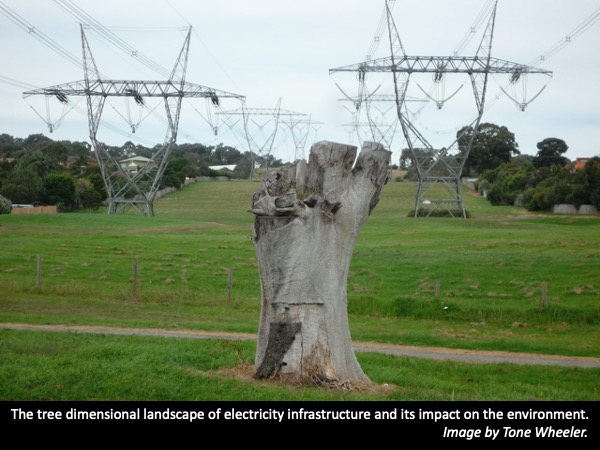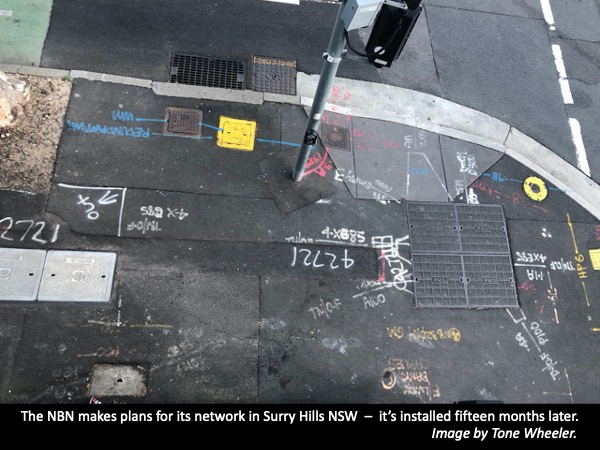‘Make Big Plans: for little plans have no magic to stir men’s blood and in themselves may never be realised.’ Daniel Burnham, US Architect and Planner, 1910.
In the lead up to today's federal budget the PM, Scott Morrison, said on the ABC 7.30 Report “We build things, and we build big things”, giving an insight into how he thinks a budget can be framed to win the popular vote. He's wrong, and it's a lie, but we'll get to that later. For now, I want to continue our analysis of the history of Australia’s ‘big plans’.
The Sydney Harbor Bridge
Last week, we looked at the Sydney Harbor Bridge - SHB - on its 90th anniversary. As a road and rail project it was big in all directions. Until recently it was the longest single-span arch bridge in the world; still the widest ever bridge with six lanes of vehicles and four train and tram tracks. It serves as the ne plus ultra model for the $17.9bn the LNP has announced for road and rail infrastructure in today’s budget. So last century.
More importantly, the SHB was a societal salvation during the Great Depression providing employment for 2000 (mostly men), some of whom, such as the stone masons and ironworkers, were immigrants. A tradition that continues as each project has a forecasted economic impact and workforce. And the SHB had another influence: an increase in children named Bridget and Archie.
The Snowy Mountains Scheme
This year is the 50th anniversary of the opening of Snowy Mountains Scheme – SMS - with similarities to the SHB, not least in the development of construction techniques, the rise in technological sophistication (‘Snowcom’ – our first main frame computer) and the immigrant workers who were the basis of modern multiculturalism. Some 42 nations were represented amongst the 100,000 workers during its construction.
Originally conceived (by the Victorian government) as a way of diverting water from the east of the Great Dividing Range to the Murray on the west (and then NSW added the Murrumbidgee), the plans for dams and pipes lead to the idea for a hydroelectric scheme as well; such that the SMS had two objectives: to provide water for agricultural irrigation, and to generate electricity.
So successful has it been that similar schemes have been suggested up and down the dividing range spine for 50 years; most recently for the 2022 election the LNP splashed $6bn on the Hells Gates and Urannah dams near Townsville in FNQ. Neither has stacked up scientifically and financially for 30 or more years. Let alone environmentally, overlooked in the past, but less so now.
Which begs the question: ‘Would the SMS pass an environmental impact assessment /statement or EIS today?’ Probably not. Drowning sixteen valleys for dams, gouging hillsides for seven power stations and two pumping stations, and towers of high-tension wires have all left scars on the landscape.

The last caused me personal distress: on my first outing cross country skiing with university friends, we were caught in a ‘white-out’. Despite following compass bearings, we came across our own tracks. We bivouacked on the snow, only to discover in the clear of morning that we had walked in a circle around a 330 kVA tower. We descended to the ‘Schlink Hilton’ hut where my humour was restored in meeting Paddy Pallin, who said that he too had been ‘caught out on the Rolling Ground’.
Pertinent to our current concerns is the arc of the project: Chifley’s Labor government got the SMS going (you can read how in a +one article here), it took 10 years to strike the Commonwealth-State agreement and 25 years to complete. The opening in October 1972 was two years before it was finished, as the McMahon Liberals looked to get some reflected bounce before Whitlam is elected two months later. At least there was no outbreak of children called Snowy.
The National Broadband Network
Elections always bring on big plans. Fifteen years ago, Kevin Rudd in his 2007 pitch announces plans for a National Broadband Network – the much-derided NBN. Keeping up with the times, Labor can see how infrastructure projects had morphed from roads and rail, to energy and water, to the digital space.
Just like the previous big social plans by Labor for Medicare and the NDIS, the NBN is taken over by the LNP, saying it can do better for cheaper; and then stuffs it up; it’s been a farrago of poor planning, lost opportunities and mismanagement. The old ways of doing infrastructure don’t necessarily work with the new technologies. And there has not been a rise in children called Nat or Nettie.

Two issues to conclude: 16 people were killed building the SHB, and a distressing 121 people lost their life building the SMS. No wonder we spend so much time now concentrating on safety on large building sites and infrastructure projects. On a lighter note, Bradfield had an expressway named after him; the SMS chief engineer, kiwi Sir William Hudson has no named dam, but a bronze plaque at the Snowy Hydro Education and Information Centre in Cooma; we are yet to see ‘Turnbull’ associated with any NBN structure.
Next week
The big threat we face now is climate change, and critically climate change hits worse in regional areas. The ‘Big Plan’ that needs to be discussed in this election is ‘Regional Regeneration’, a reconfiguring of how we adapt the regional areas of Australia to make them resilient to climate change. That’s the subject of next week's Tone on Tuesday
Tone Wheeler is principal architect at Environa Studio, Adjunct Professor at UNSW and is President of the Australian Architecture Association. The views expressed here are solely those of the author and are not held or endorsed by A+D, the AAA or UNSW. Tone does not read Instagram, Facebook, Twitter or Linked In. Sanity is preserved by reading and replying only to comments addressed to [email protected]

